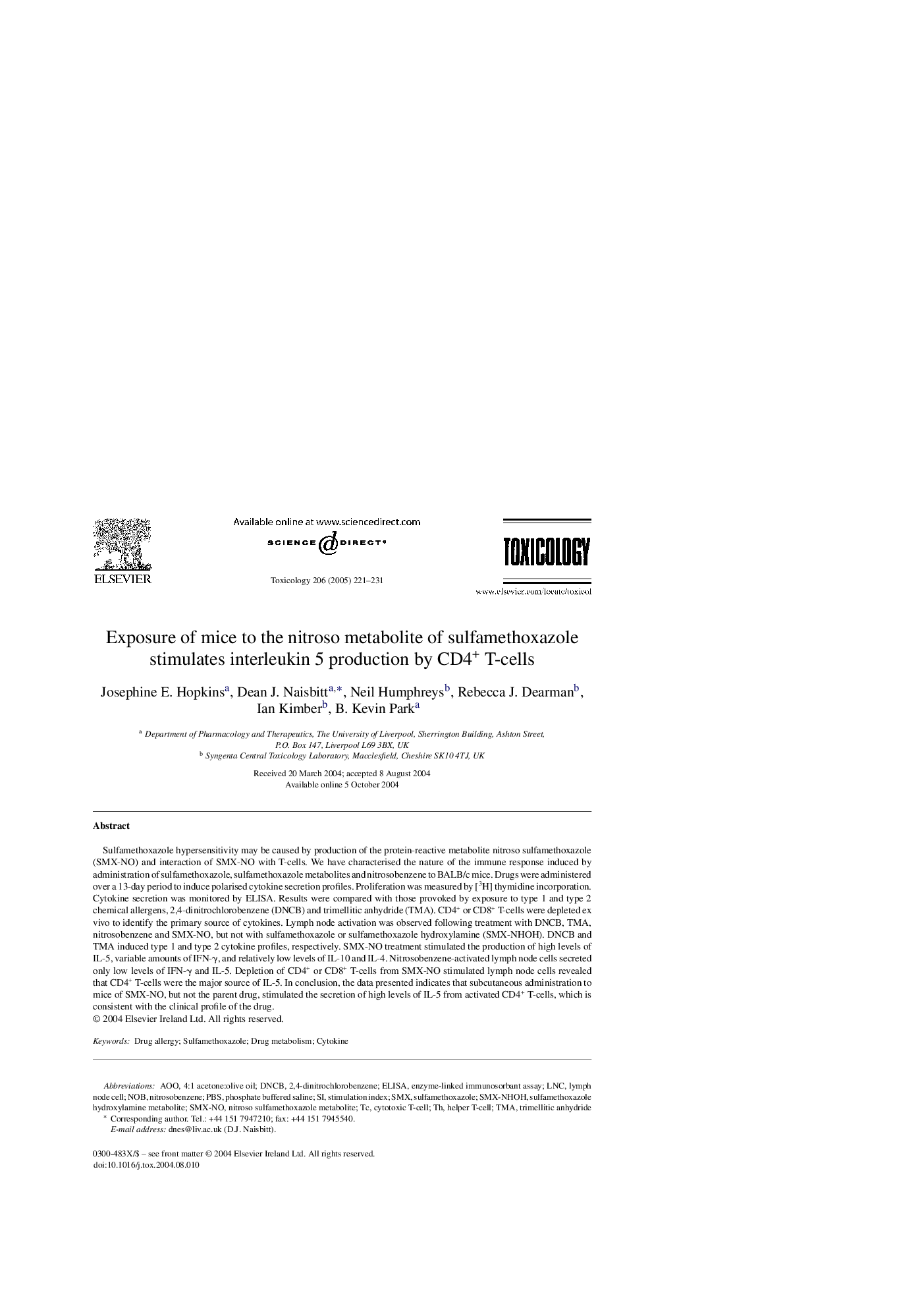| Article ID | Journal | Published Year | Pages | File Type |
|---|---|---|---|---|
| 9035182 | Toxicology | 2005 | 11 Pages |
Abstract
Sulfamethoxazole hypersensitivity may be caused by production of the protein-reactive metabolite nitroso sulfamethoxazole (SMX-NO) and interaction of SMX-NO with T-cells. We have characterised the nature of the immune response induced by administration of sulfamethoxazole, sulfamethoxazole metabolites and nitrosobenzene to BALB/c mice. Drugs were administered over a 13-day period to induce polarised cytokine secretion profiles. Proliferation was measured by [3H] thymidine incorporation. Cytokine secretion was monitored by ELISA. Results were compared with those provoked by exposure to type 1 and type 2 chemical allergens, 2,4-dinitrochlorobenzene (DNCB) and trimellitic anhydride (TMA). CD4+ or CD8+ T-cells were depleted ex vivo to identify the primary source of cytokines. Lymph node activation was observed following treatment with DNCB, TMA, nitrosobenzene and SMX-NO, but not with sulfamethoxazole or sulfamethoxazole hydroxylamine (SMX-NHOH). DNCB and TMA induced type 1 and type 2 cytokine profiles, respectively. SMX-NO treatment stimulated the production of high levels of IL-5, variable amounts of IFN-γ, and relatively low levels of IL-10 and IL-4. Nitrosobenzene-activated lymph node cells secreted only low levels of IFN-γ and IL-5. Depletion of CD4+ or CD8+ T-cells from SMX-NO stimulated lymph node cells revealed that CD4+ T-cells were the major source of IL-5. In conclusion, the data presented indicates that subcutaneous administration to mice of SMX-NO, but not the parent drug, stimulated the secretion of high levels of IL-5 from activated CD4+ T-cells, which is consistent with the clinical profile of the drug.
Keywords
Related Topics
Life Sciences
Environmental Science
Health, Toxicology and Mutagenesis
Authors
Josephine E. Hopkins, Dean J. Naisbitt, Neil Humphreys, Rebecca J. Dearman, Ian Kimber, B. Kevin Park,
